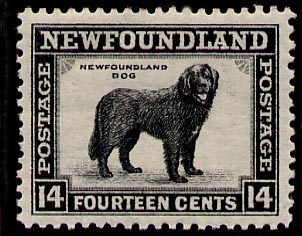
History

 |
Newfoundland History |
 |
Conditions in Newfoundland in 1930-31
[This text was published in the Canadian Annual Review; for the full citation, see the end of the text.]
The general industrial depression of 1930-31 was, on the whole, reflected in Newfoundland . The exports of pulp and paper and of minerals showed increases in quantity and value for the year ended June 30, 1930, but the Colony's staple product of fish showed a loss through the shortage in the catch and the low price received for codfish. The total trade of the Colony for the same period was, imports $31,900,000 and exports, $40,000,000. The unemployment situation had reached no alarming proportion. When the Budget was presented on Apr. 22, 1931, to the third Session of Parliament, which opened on Mar. 11, 1931, it showed the Revenue for the year 1929-30 as $11,57215 and Expenditure, $11,434,313, with a Surplus of 144,902. The 1930-31 revised Estimates gave Expenditure as $11,895,100 and Revenue, $9,920,500, showing an Estimated Deficit of $1,974,600. Allowing $500,000 for unforeseen Expenditures the Estimated Expenditure for 1931-32 was given as $11,413,946, and Revenue, $10,010,000. At June 30, 1930, the Public Debt was $82,592,105; to this was added a Loan of $5,000,000 raised during the current year. It was estimated that at June 30, 1931, the National Debt would be $90,315,000.
In May, 1931, owing to no tenders having been received for its $8,000,000 five per cent. loan, the Newfoundland Treasury was faced with temporary default; this was relieved, however, by a syndicate of Canadian banks consisting of the Bank of Montreal, the Royal, the Commerce, and the Nova Scotia, who undertook to take care of the existing obligations pending a long term financing.
The interim Report, published on May 10, of the Royal Commission appointed to investigate the dreadful destruction of the sealing ship Viking off Horse Island , on Mar. 6, 1931 , stated that the explosion had been caused by the insecure fastening of tins containing gun powder which allowed the loose powder to escape. The Viking was owned by Bowring Bros. of St. John's.
Source: Canadian Annual Review of Public Affairs, 1930-31, Toronto, The Canadian Review Company, 1931, p. 337.
© 2004 Claude Bélanger, Marianopolis College |